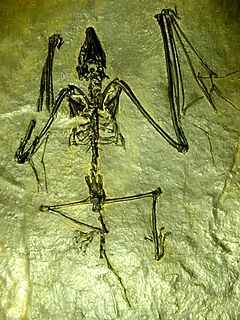 W
WArchaeonycteris is an archaic bat genus whose fossilised remains have been found in Germany, France, England and India.
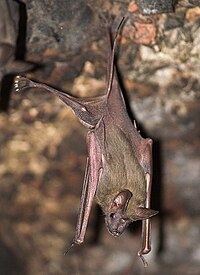 W
WThe greater mouse-tailed bat is a species of bat in the Rhinopomatidae family.
 W
WThe Brazilian funnel-eared bat is a South American bat species found in eastern Brazil and in Paraguay. It roosts in caves, which makes it vulnerable to disturbance of these scarce sites, and in particular, to extermination campaigns against cave-roosting bats carried out in Brazil to combat rabies.
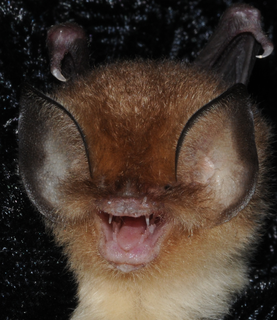 W
WThe genus Chilonatalus of funnel-eared bats is found in South America and the Antilles. It has three species.
 W
WThe eastern bent-wing bat, is a species of vesper bat in the family Vespertilionidae. It is found in South Asia, Far-east Asia, the east Caucasus Mountains and also in Southeast Asian regions.
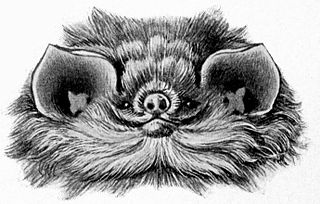 W
WFuripteridae is family of bats, allying two genera of single species, Amorphochilus schnablii and the type Furipterus horrens. They are found in Central and South America and are closely related to the bats in the families Natalidae and Thyropteridae. The species are distinguished by their reduced or functionless thumbs, enclosed by the wing membranes, and their broad, funnel-shaped ears. They are insectivorous and can live in many different kinds of environments. They have greyish fur, and a small nose-leaf. Like many bats, they roost in caves.
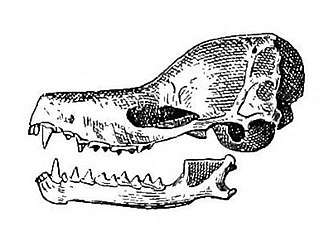 W
WGervais's funnel-eared bat is a species of bat in the family Natalidae. It is monotypic within the genus Nyctiellus. It is found in Bahamas and Cuba.
 W
WGlen's long-fingered bat is a species of vesper bat in the family Vespertilionidae and it belongs to the class Mammalia. It is found only in Madagascar.
 W
WThe greater long-fingered bat is a species of vesper bat in the family Vespertilionidae. It is found in Cameroon, Central African Republic, Democratic Republic of the Congo, Equatorial Guinea, Ethiopia, Gabon, Guinea, Kenya, Liberia, Mozambique, Namibia, Rwanda, Tanzania, Uganda, and Zimbabwe. It roosts in caves.
 W
WGriffith's long-fingered bat is a bat in the genus Miniopterus which occurs in southern Madagascar. M. griffithsi was previously a part of the largest family of bats, the Vespertilionidae, which consist of 5 subfamilies. The bat family Miniopteridae is widely distributed, ranging from the majority of sub-Sahara Africa to north Africa and Eurasia, as well as southern and southeastern Asia and Australia. Typical features of these bats include elongated third fingers, long narrow wings giving them a pointed shape when in flight, and a bent shape when folded, adding to the common name of bent-wing bats. M. griffithsi is similar to its sister species Miniopterus gleni, which lives north of the Onilahy River, while M. giffithsi lives south of it. Researchers first discovered that M. griffithsi was separate from M. gleni based on phylogeographic studies of M. gleni.
 W
WThe hairy slit-faced bat is a species of slit-faced bat widely distributed throughout forests and savannas in Africa. Two recognized subspecies exist: N. h. hispida and N. h. pallida. Various forest populations in western and central Africa may be a separate species, although that has not been positively identified as of 2007.
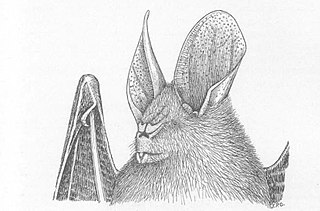 W
WThe Ja slit-faced bat is a species of slit-faced bat that lives in the tropical and subtropical forests of Africa. Its habitat is fragmented and declining, and the species is therefore very rare. Logging and farming are the greatest threats to its habitat currently. The two known subspecies are: N. m. avakubia and N. m. major.
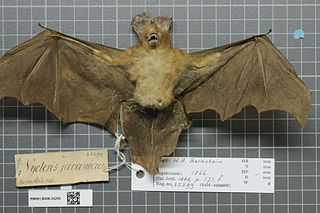 W
WThe Javan slit-faced bat is a species of slit-faced bats found on the Kangean Islands of Indonesia and Nusa Penida, Java. This species is also located in West Timor. This species' population is decreasing.
 W
WThe large-eared slit-faced bat, Nycteris macrotis, is a species of slit-faced bat which lives in forests and savannas throughout Africa. Nycteris vinsoni was once considered a synonym of N. macrotis, but it became recognized as a separate species in 2004. Some, however, still consider N. vinsoni to be a subspecies of N. macrotis, and consider N. macrotis a species complex.
 W
WLaVal's disk-winged bat is a species of bat in the family Thyropteridae. It is native to Ecuador, Colombia, Peru, Venezuela and Brazil where it has been found near streams in tropical rainforest. The bat is insectivorous. It is poorly studied but is believed to be rare. The species was named in honor of American zoologist Richard K. LaVal.
 W
WA leaf nose or nose-leaf is an often large, lance-shaped nose, found in bats of the Phyllostomidae, Hipposideridae, and Rhinolophidae families. Because these bats echolocate nasally, this nose-leaf is thought to serve some role in modifying and directing the echolocation call.
 W
WMajor's long-fingered bat is a species of vesper bat in the family Vespertilionidae. It is found only in Madagascar. It is similar to M. schreibersi of Africa, differing by having a shorter forearm, slightly longer digits and a narrow box-shaped skull. The pelage is often a greyish brown colour, and the tragus is kidney-shaped and is a prominent feature. The species was named in honor of Swiss zoologist C. I. Forsyth Major.
 W
WThe Malagasy slit-faced bat is a species of slit-faced bat in Madagascar. Very little is known about this species.
 W
WMegaderma is a genus of bat in the family Megadermatidae. It contains the following two living species:Lesser false vampire bat Greater false vampire bat
 W
WThe Mexican funnel-eared bat is a bat species found in Central America and the Caribbean.
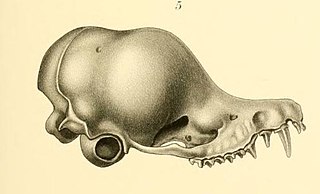 W
WMiniopterus macrocneme is a bat in the genus Miniopterus. It is found primarily in the Loyalty Islands of New Caledonia, though it is also found in New Guinea. It has been considered a subspecies of Miniopterus pusillus in recent years. It lives in caves in large numbers, though it can also be found in forests.
 W
WThe family Mormoopidae contains bats known generally as mustached bats, ghost-faced bats, and naked-backed bats. They are found in the Americas from the Southwestern United States to Southeastern Brazil.
 W
WMormoops is a genus of bat in the family Mormoopidae. It contains the following species:Antillean ghost-faced bat Giant ghost-faced bat Ghost-faced bat
 W
WMyzopoda, which has two described species, is the only genus in the bat family Myzopodidae. Myzopodidae is unique as the only family of bats presently endemic to Madagascar. However, fossil discoveries indicate that the family has an ancient lineage in Africa, extending from the Pleistocene as far back as the late Eocene. Based on nuclear DNA sequence data, Myzopodidae appears to be basal in the Gondwanan superfamily Noctilionoidea, most of whose members are neotropical. The origin and initial diversification of Noctilionoidea may have occurred in Africa prior to their dispersal to Australia and South America, probably via Antarctica. On the basis of fossil and molecular clock evidence, myzopodids are estimated to have split off from the rest of Noctilionoidea about 50 million years ago.
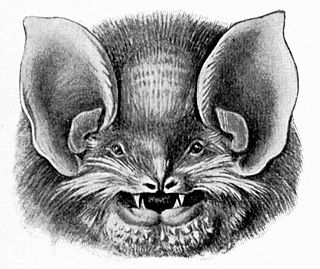 W
WThe family Natalidae, or funnel-eared bats, are found from Mexico to Brazil and the Caribbean islands. The family has three genera, Chilonatalus, Natalus and Nyctiellus. They are slender bats with unusually long tails and, as their name suggests, funnel-shaped ears. They are small, at only 3.5 to 5.5 cm in length, with brown, grey, or reddish fur. Like many other bats, they are insectivorous, and roost in caves.
 W
WPeterson's long-fingered bat is a bat in the genus Miniopterus which occurs in southeast Madagascar. It was described by Steven M. Goodman et al. in 2008. While M. petersoni is similar to M. sororculus, the two species are not closely related to each other, and possess a number of differing external and cranial characteristics.
 W
WThe Philippine long-fingered bat is a species of bat from the family Miniopteridae. The species is listed as "Data Deficient" on the IUCN Red List due to lack of information about population, ecology, distribution, and threats. The Philippine long-fingered bat is native to Indonesia, the Philippines, Malaysia, and Timor-Leste. Due to the dubious taxonomic status of the Philippine long-fingered bat, it has been suggested that the species remain classified as a subspecies of the little bent-wing bat.
 W
WPteronotus is a genus of bats. Eight extant species have been recognized, as well as one relatively recently extinct species.
 W
WThe small mouse-tailed bat is a species of bat in the Rhinopomatidae family. It is found in Afghanistan, Iran, Oman, and possibly Ethiopia. The small mouse-tailed bat ranges from the Seistan basin in Iran well into the Helmand River basin of south-western Afghanistan.
 W
WThe smoky bat is a species of bat in the family Furipteridae. It is monotypic within the genus Amorphochilus. Its natural habitat is rocky shores. It is threatened by habitat loss. This bat is also called the thumbless bat because its thumb is partly enclosed in its wing; this common name is also applied to another species, Furipterus horrens. This species lives in western Peru, western Ecuador, Puna island (Ecuador) and northern Chile. These bats can be found in groups up to 300 bats. In 2013, Bat Conservation International listed this species as one of the 35 species of its worldwide priority list of conservation. The Smoky Bat is known to be exclusive to neotropical distribution, especially in Central American regions. It is also known that they do not leave their habitat until very dark out. The Smoky Bat also insectivores animals that like to fly very close to the ground to catch their prey. They also like to live in areas that are very hidden, such as small crevices (Duda, R., Dalapicolla, J., & Costa, L. P..
 W
WDisk-winged bats are a small group of bats of the family Thyropteridae and genus Thyroptera. They are found in Central and South America, usually in moist tropical rain forests. It is a very small family, consisting of a single genus with five extant and one fossil species.
 W
WThe Trinidadian funnel-eared bat is a species of bat in the family Natalidae. It is endemic to Colombia, Venezuela, Guyana, Suriname, French Guiana, Trinidad and Tobago and Netherlands Antilles.
 W
WThe western sucker-footed bat is a Malagasy bat. Little is known about its habits, but they are assumed to be similar to those of the Madagascar sucker-footed bat.
 W
WWood's slit-faced bat (Nycteris woodi) is a species of slit-faced bat that lives in the dry savanna regions of Southern Africa. Its numbers are declining due to habitat loss from logging and farming, pesticide use, and the decline of baobab trees on which these bats depend for roost sites.